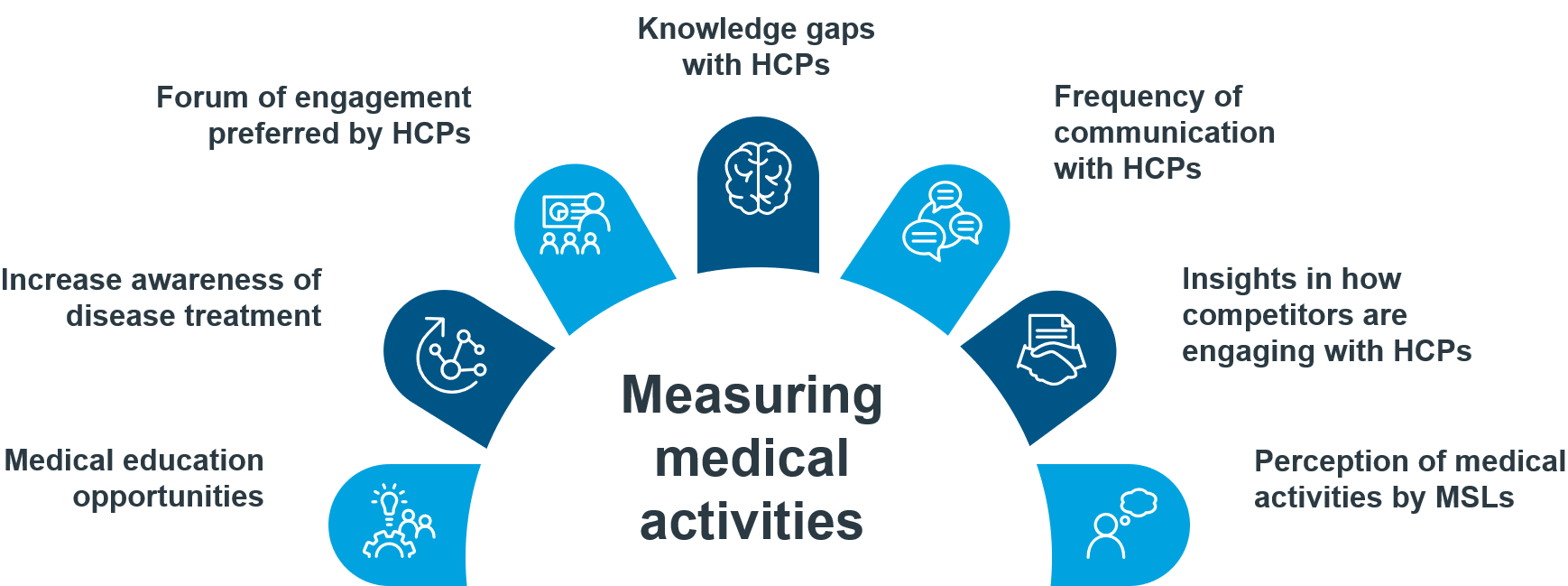











Convenient and timely access to the latest credible scientific information is key to a health care practitioner’s (HCP’s) ability to provide the best care possible to their patients. While pharmaceutical manufacturers conduct numerous medical activities each year to address existing knowledge gaps, how do we know if they meet the needs of HCPs, and thus impact positively on patient care?
In this post, we discuss how to overcome some common challenges faced in developing medical activities and how to ensure investments have maximum impact to improve patient outcomes.
Ensuring the content resonates with each HCP
Prior to engaging with HCPs, it is helpful to establish a baseline assessment of their awareness and perceptions of new medical information, tools, and strategies. At the same time, it is important to recognize that information gaps may not always reflect a lack of knowledge but may be the result of HCP perceptions and attitudes. Topics that lack immediate relevance for a practitioner may not resonate with them. Using standardized questionnaires and leveraging theoretical constructs, detailed insights can be gleaned that help understand physician perceptions.
Determining awareness and attitudes can articulate learning objectives that HCPs are keen to meet. This can lead to the development of a more targeted medical education program that addresses their areas of interest.
Effectively utilizing limited resources to reach the appropriate audiences
There are myriad communication channels available to engage with HCPs such as virtual meetings, small group meetings, continuing education forums, and conferences, among others. However, it can be costly and not always efficient to leverage these channels and meeting formats. It is key to understand how HCPs prefer to engage with the pharmaceutical organization. This can vary by therapy area and the type of information that is to be disseminated. For example, HCPs may prefer to engage in small group sessions to discuss the results of a pivotal trial among peers, but otherwise favour in-person or virtual one-on-one meetings with medical science liaisons (MSLs) for any additional engagements.
In addition to the meeting format, paying attention to details such as the time of day and duration of the meeting can influence how receptive HCPs will be to the information provided to them. Building these details into your organization’s medical education strategies can ensure that the time spent with HCPs is of value to both the HCP and MSL.
Furthermore, even within the same therapeutic area, HCPs are unlikely to be homogenous. There may be nuances in how individuals prefer to engage with a pharmaceutical organization based on demographic factors such as age, gender, and geography; all factors which can impact delivery of medical education.
Through these insights, pharmaceutical manufacturers can align internal resources, develop strategies, and create actionable tactics to ensure all customer engagements drive value and pave the way for continued collaboration between the medical affairs team and HCPs.
Assessing the broader impact and staying relevant
Once a baseline assessment has been established, communication plans developed, and the resultant medical education delivered, it is important to determine whether strategic objectives were met. Were identifiable changes made in how HCPs delivered patient care?
By conducting a follow-up assessment, insights can be obtained to determine what proportion of HCPs felt they received support and information that was pertinent to them. This second phase can evaluate the impact of the medical activities undertaken. It is also possible at this time to identify any external influences that may have shaped receptivity by HCPs, e.g. competitor activities, policy impacts or significant findings in disease management.
Armed with this information, subsequent medical activities and MSL engagements can be tailored to ensure relevance. At its core, the relationship a pharmaceutical organization has with its HCPs is essential to drive positive healthcare outcomes for patients. It is critical to measure the overall satisfaction with an organization’s medical outreach activities. If HCPs do not derive value from these initiatives, it is unlikely that any strategies will be impactful.

Establishing a process to measure impact
Developing a streamlined and cost-effective solution to assess the impact of medical activities will address the challenges described. This includes identification of the key questions, questionnaire development, recruitment of respondents, and insight generation. These processes can be efficiently adapted for various therapy areas and HCP types, allowing for short turnaround times for results.
Ultimately, these insights support pharmaceutical organizations in empowering the HCP to enhance patient care through the delivery of relevant and timely medical education and helping achieve the goal of positive patient outcomes.
For more on how to assess the impact of your organization’s medical activities and how IQVIA can help, contact calum.neish@iqvia.com.

